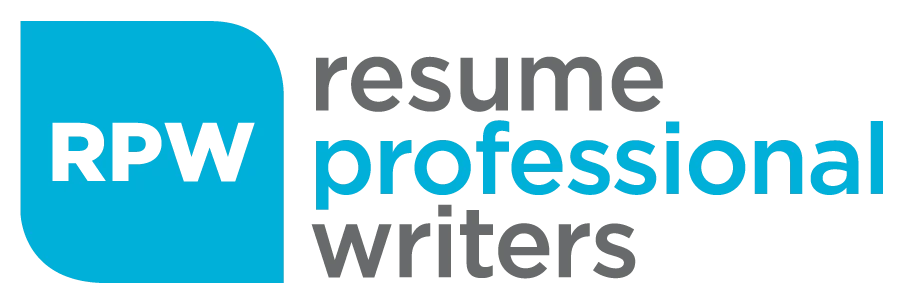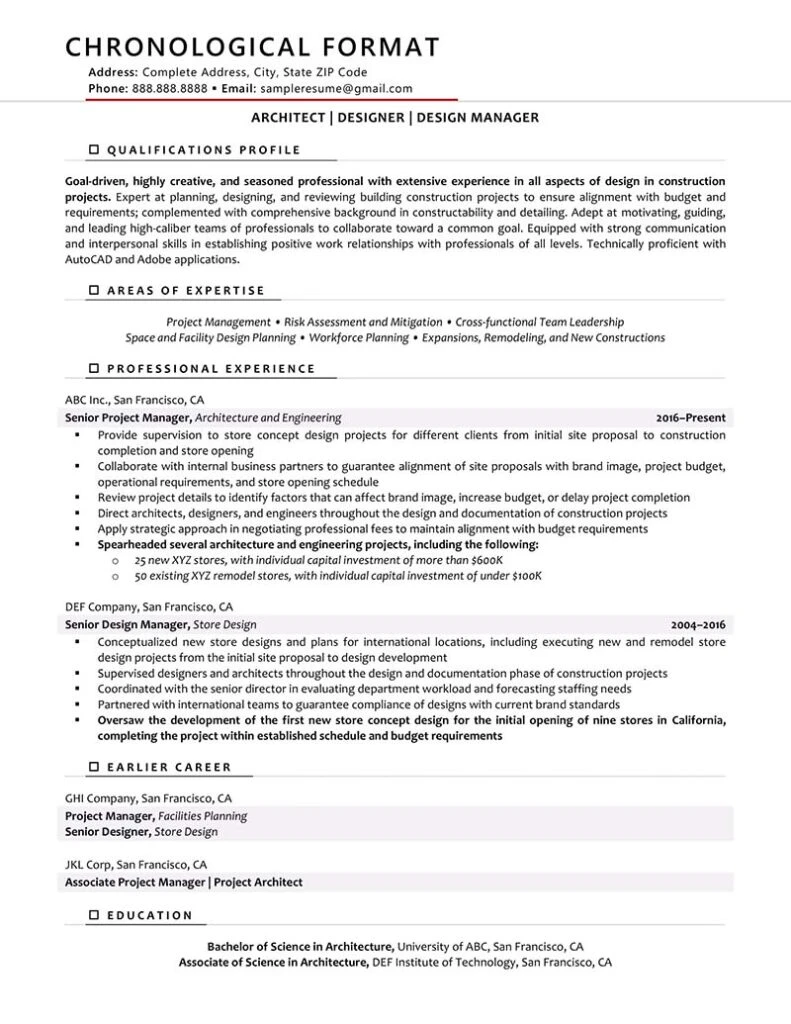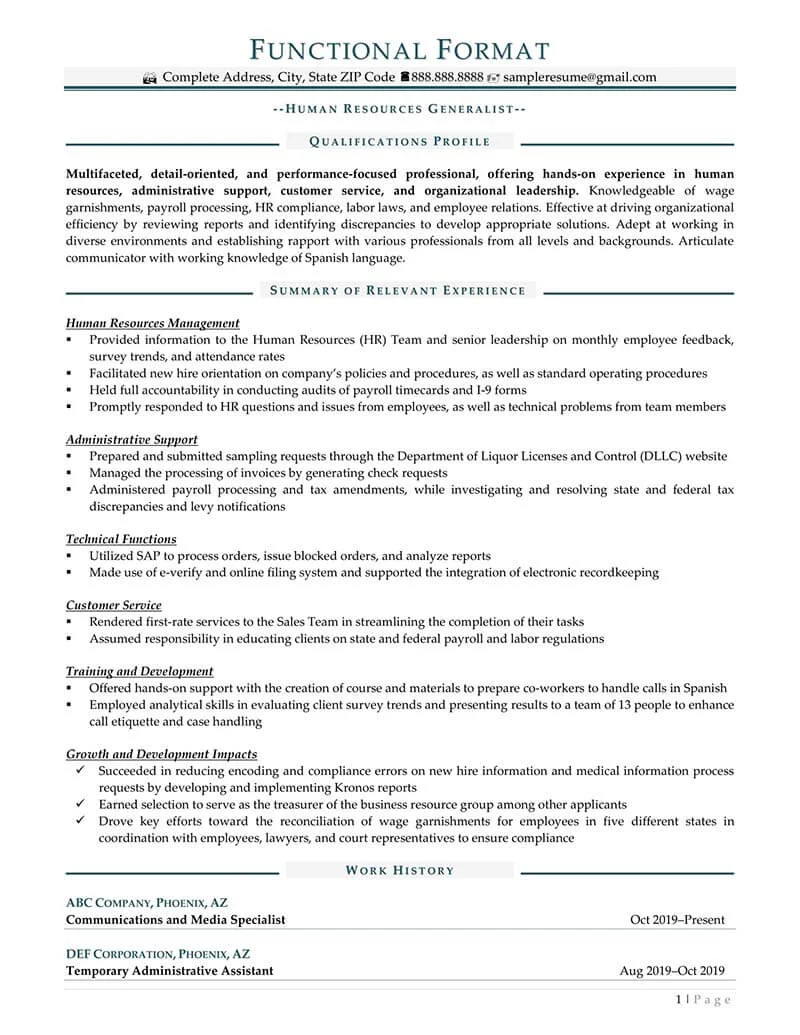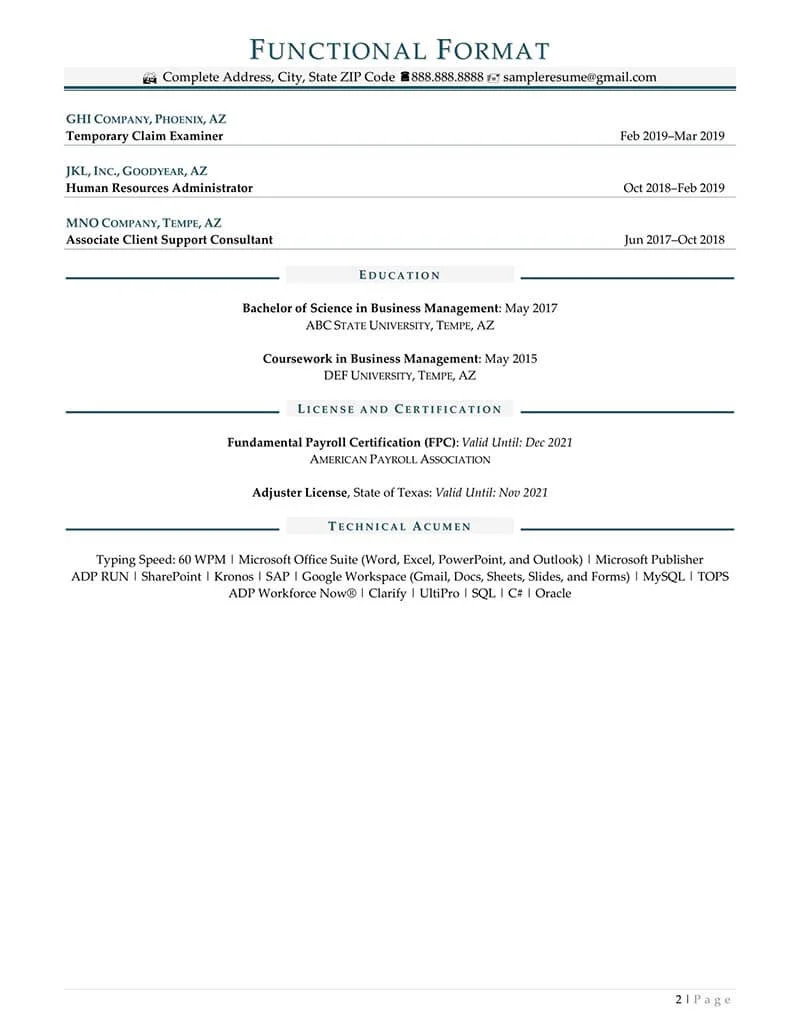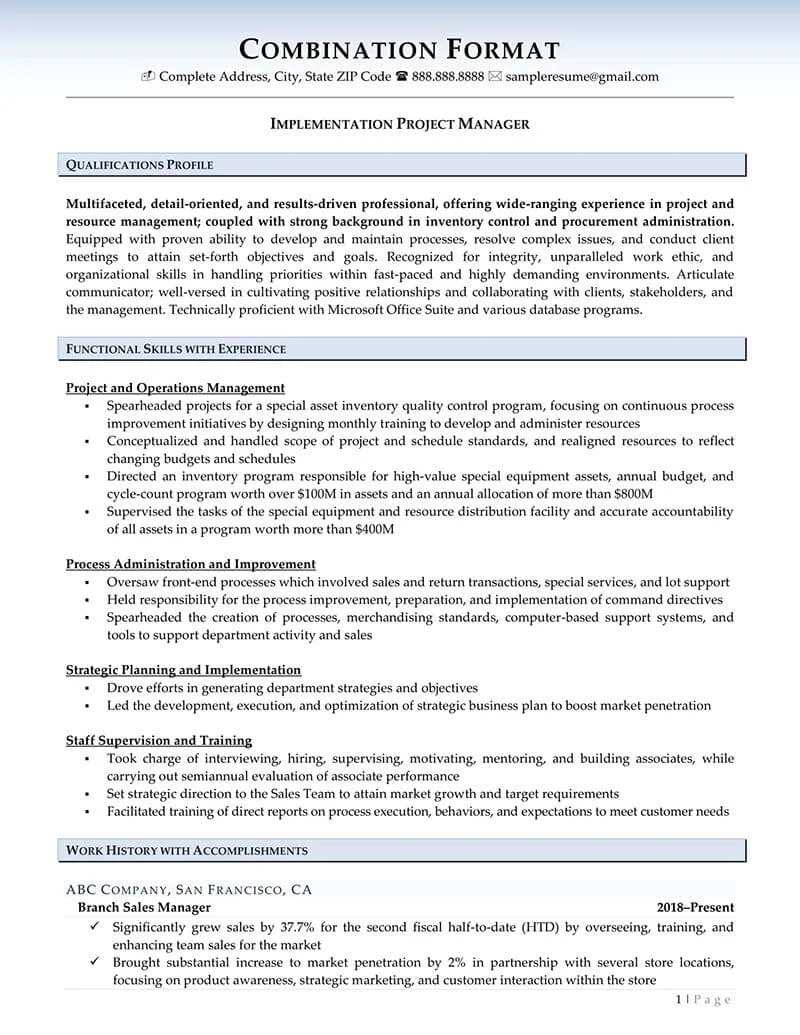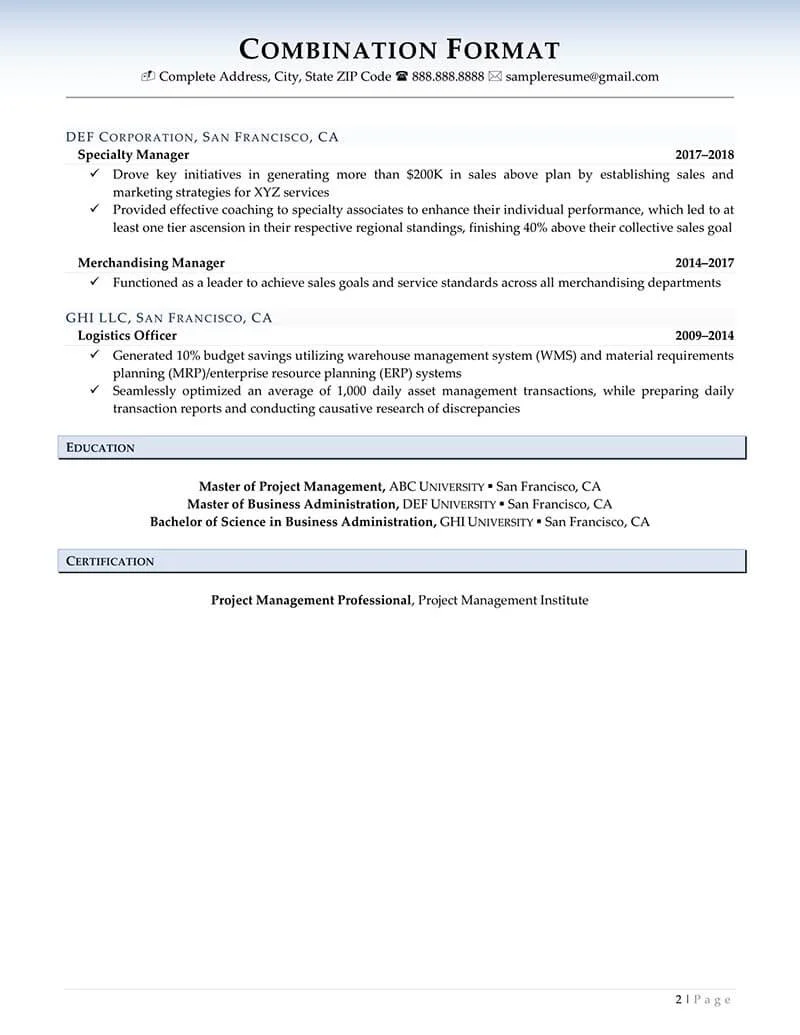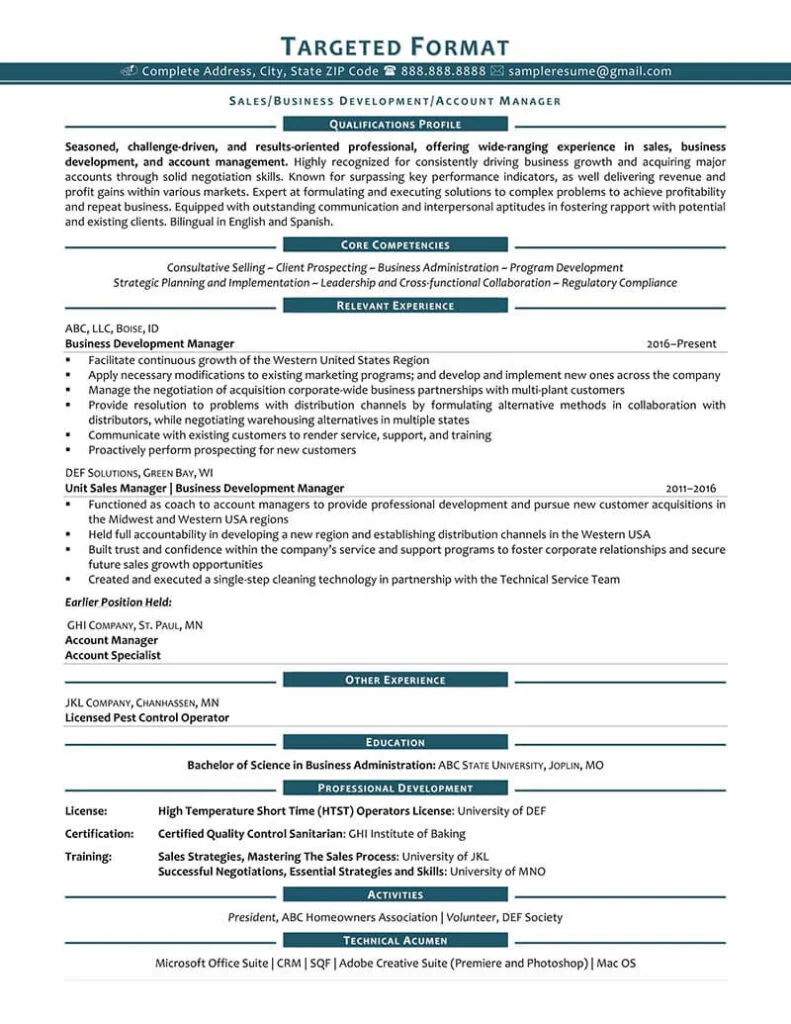The 4 Best Resume Format Examples

Landing a job takes a job-winning resume. Ensuring that your resume has what it takes to pass the 6-second eye test will help you secure your target position. Writing a resume could be tricky especially in choosing the right resume format. Having the format that best suits your experience and target post is important. Thus, we have prepared resume format examples for you to gauge what type will make you rise above other job seekers.
What is Resume Format?
Resume formats make it easier for hiring managers to see if you’re a great candidate. Take this to your advantage by knowing the different formats and choosing what’s best for your current situation. There are four major resume formats for you to choose from, each of which having its own characteristics and functions.
Every resume format for job applications has its main goal, which is to aid you in tailoring and highlighting skills and experiences to stand out. It’s crucial for you to assess your current resume if it’s a good resume format that emphasizes your best qualities and credentials.
Once you’re done checking your resume, assess if you need to change its format or not. In line with this, we have listed some tips in choosing the most appropriate type of resume format.
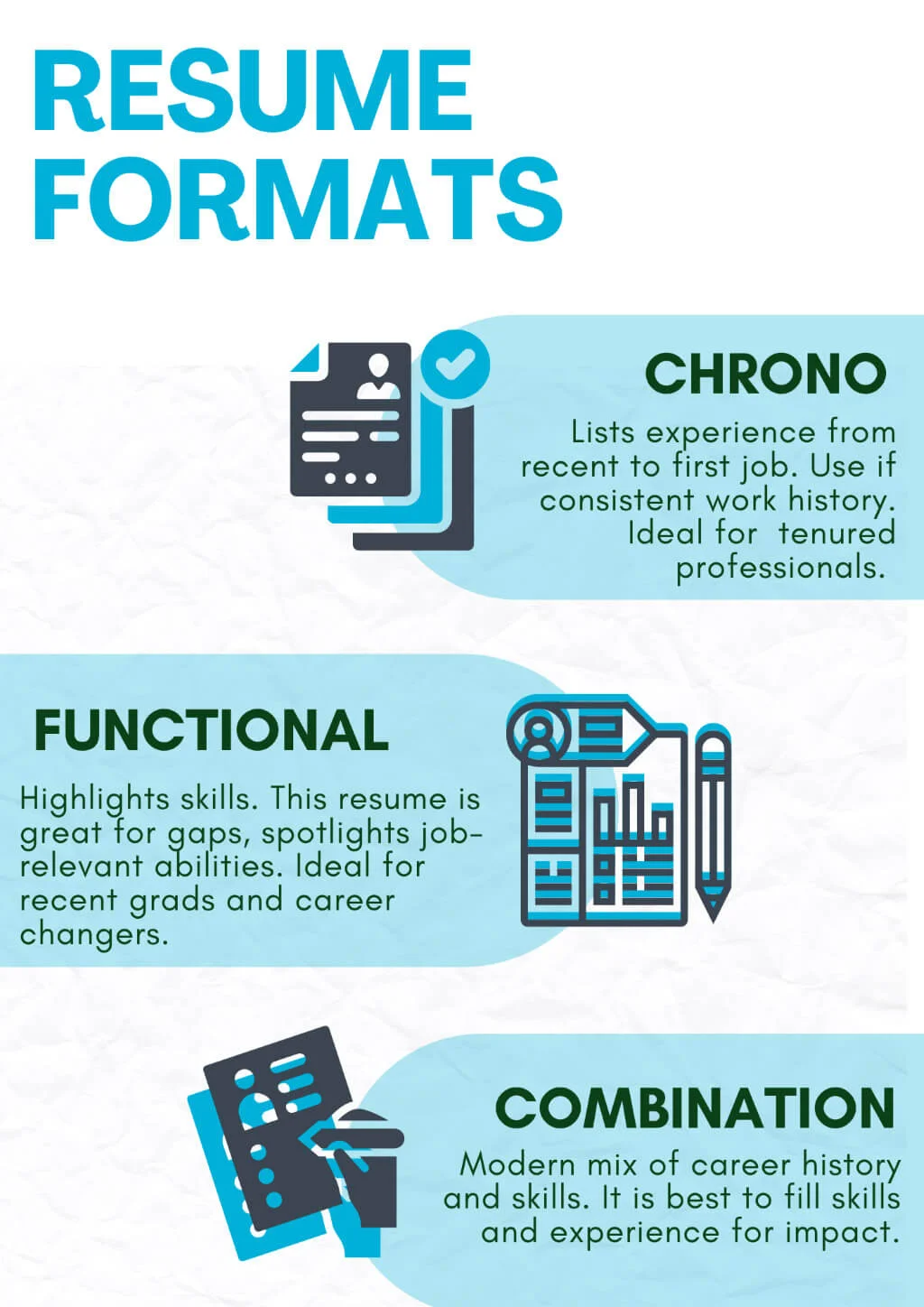
How to Choose the Best Resume Format
Choosing the top resume format depends on your career level, work history, experience, and job title and description you’re applying for. Therefore, some resume formats are unfitting in some situations.
Here’s a quick rundown of what to consider before choosing the best resume layout.
- Chronological resume format lets you highlight your career progression from the beginning of your professional journey.
- Functional resume format allows you to put more value on your skills and qualifications than your years of experience. This is advisable for entry-level applicants and those who plan to change careers.
- Combination resume format is for you if you want to emphasize both your work experience and competencies. This is advisable for job seekers with extensive experience and broad skills which are all relevant to the target job.
- Targeted resume format enables you to focus on skills and career highlights significant to the job post you’re applying for. This comes in handy when you need the reader to focus only on the relevant job duties and not on the other experiences you’ve had.
To have a proper resume format, you need to take into account several factors aside from those previously stated. Read on for an in-depth discussion of professional resume format examples.
Types of Resume
Writing a resume may not be the most exciting part of the job application process, but it’s vital for landing a job interview. You simply cannot make one resume and send it to every job opening you encounter. That’s not how it should be! What you need is a resume structure that clearly reflects what you can bring to the table.
One way to ace resume writing is by knowing what format to use. Having that said, we want to make things easier for you. We have laid out the 4 best resume designs as your benchmark in writing yours.
Chronological Resume Format
Chronological resume (or reverse-chronological) is the most common format. This layout allows you to list your work experience from the most recent down to your first employment. If you have a consistent and relevant work history, this format is for you. Nonetheless, use either functional or combination resume format if you have employment gaps.
This format puts emphasis on the progression of your career, given that you have a good record of related experiences. Aside from career highlights, here are some important sections of chronological resume format.
- Qualifications Profile
- Areas of Expertise
- Professional
- Experience
- Earlier Career
- Education
Pros of Chronological Resume Format
- It’s easiest to write since you just need to cite your work history in reverse-chronological order.
- A chronological format points out the relevant career path you’ve taken for the past years.
- It’s the most common format so recruiters already know where to look at for the information they need.
Cons of Chronological Resume Format
- It helps hiring managers to notice if job seekers have career gaps.
- This isn’t ideal for entry-level applicants because their experiences may be irrelevant for the job posting.
- If you’re shifting to a different industry, this doesn’t help you highlight your skills.
Chronological Resume Format Example
Functional Resume Format
If chronological resume format puts emphasis on work history, a functional resume format highlights the skills and what the job applicant can offer. This is ideal for those with career gaps because hiring managers will focus on skills and abilities needed for the job.
If you want to stress out that you’re capable for your target position, consider writing a functional resume format. Here’s the order of sections for this layout.
- Qualifications Profile
- Summary of Relevant Experience (or Career Overview)
- Work History
- Education
- License and Certification
Pros of Chronological Resume Format
- This is best for accentuating your skills.
- It lifts the worry that hiring managers will focus on your employment gap.
- This layout is advisable for those who just graduated or plan to change careers.
Cons of Functional Resume Format
- It’s not that easy to scan.
- It gives recruiters an impression that you’re hiding something.
- Since it focuses on skills, career growth is neglected.
Functional Resume Format Example
Combination Resume Format
Combination resume is a modern resume format. It’s sometimes referred to as the hybrid format because it showcases both work experience and skills. It’s a combination of chronological and functional resume formats.
This type of resume is best in putting equal value on career path and qualifications. Thus, skills and work experience sections are to be filled with relevant information. Here are the common sections for this layout.
- Qualifications Profile
- Functional Skills with Experience
- Work History with Accomplishments
- Education
- Certification
Additionally, this resume format is best for those who are making career shift and have impressive skill set. Also, this format serves best those with commendable employment history. Consider writing a combination resume format when you’ll apply for leadership positions where accomplishments and transferable skills need to be highlighted.
Pros of Combination Resume Format
- It lets you display both work history and skills.
- This is ideal for senior professionals.
- It backs up your skills with experience.
Cons of Combination Resume Format
- This is only suitable for experienced professionals.
- It’s longer than other formats because you need to cite your experiences and skills.
- Writing a combination resume format takes up more time and effort.
Combination Resume Format Example
Targeted Resume Format
Among the most common 2023 resume formats, a targeted resume aims to present your career path and skills that are relevant to your target job. Basically, it’s tailored to a specific job.
This has become a trend in resume writing because most recruiters prefer this format. It’s easier for them to weigh if the candidate qualifies for the post. Moreover, you have to remember that it’s not a good thing to send generic resumes to multiple (and different) job listings.
If you want to get the interest of hiring managers, use this format. Tailor your resume based on the posted job description. You can do this by editing the summary of qualifications section and highlight the skills the job requires of the applicant to excel in it. Here are the common sections of a targeted resume format.
- Qualifications Profile
- Core Competencies
- Relevant Experience
- Other Experience
- Education
- Professional Development
- Activities
- Technical Acumen
Pros of Targeted Resume Format
- It’s easier for hiring managers to see if you’re best fit for the job.
- A tailored resume is keyword-rich, which makes it easier to pass the ATS.
Cons of Targeted Resume Format
- Some work details not related to the position won’t be included.
- It requires effort to make one resume for a specific job.
Targeted Resume Format Example
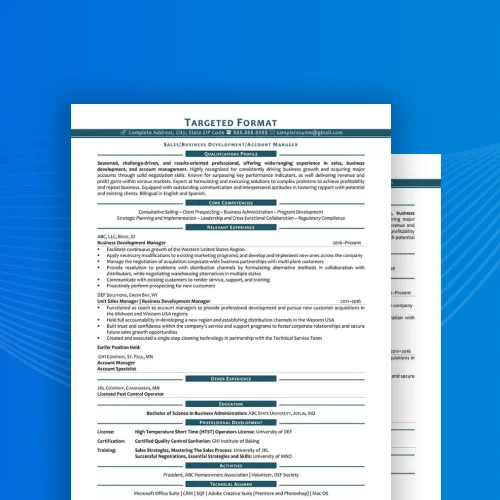
Resume Examples for Various Industries
How to Format a Resume
1. Carefully read the job posting.
At the beginning of your job application process, it’s very important to read the post again and again. You can even print it out so you could be familiar with what the role expects of you.
The information you gather can help tailor your resume for your target position. Remember that hiring managers need to know that you fully understand the requirements that they’re looking for.
2. Match your resume to the job requirements.
Now that you’ve read the job posting, you need to proceed in honing your resume to the hiring manager’s requirements. Include relevant experiences, skills, and accomplishments.
Majority of applicants are just sending off their old resumes, and that’s one of the biggest mistakes applicants make. If you put a little effort to customize your resume, you’ll be more likely to receive a call for an interview because you’ve listed what is relevant.
3. Create an excellent first point.
When you already know what the hiring manager is looking for, check your resume and choose the best experience that suits the position the most. Do some revisions so you’ll know what to put on the higher part of your resume.
4. Refurbish your resume even with less relevant experiences.
By putting your pertinent experiences at the top, that doesn’t mean you should neglect other parts of your work history.
Some job postings require soft skills such as good communication and the ability to work in a team, to name a few. Make the most out of your past jobs by highlighting abilities you can relate to your target position.
5. Write your details using readable font.
There are no standard resume fonts; but you can choose from common fonts used in modern resume examples. These include Book Antiqua, Calibri, Cambria, Candara, Corbel, Garamond, Georgia, Palatino Linotype, Trebuchet MS, and Verdana.
Another thing to consider is the font size. A good style isn’t enough; you need a readable font size. You can go for 9.5 to 10 points. This is critical because citing your accomplishments and experience serves the information’s purpose only if hiring managers can read them. That’s why you need to use the best font style and size.
6. Make use of section titles.
Use section headings to your advantage. Make sure that it helps recruiters to easily find the information they need. You can stylize these sections by bolding, underlining, increasing font size by one to two points, or changing the font style. However, make sure that you only use two styles all throughout your document.
7. Use bullet points strategically.
As mentioned earlier, great resumes are those easy to read. One way to do this is to use bullet points when listing your achievements, relevant skill, and employment history. However, don’t use this resume style when you’ll only cite three or fewer points.
8. Double-check if your application is clear.
Once you’re done customizing your resume, it’s now time to check if you’ve tailored your resume successfully. Have a friend or mentor check it. If it’s already clear for them why you’re applying for the post, then your resume is now ready for submission.
Bonus Tip: If you’re still not confident in writing a job-winning resume, you can opt to hire professional resume writers. Doing so gives you the assurance that your resume will not only pass the ATS, but also increase your chances of getting job interview invites.
Frequently Asked Questions on Resume Formats
1. What is the best resume format?
2. Does resume format matter?
3. How to make an effective resume format?
4. What file format should my resume be in?
Prepare your Resume with the Help of the Experts
What are you waiting for? Get ready to ace your next job search journey with a resume that will surely secure you a job. Contact us now and let our professional writers aid you with your job search needs.
